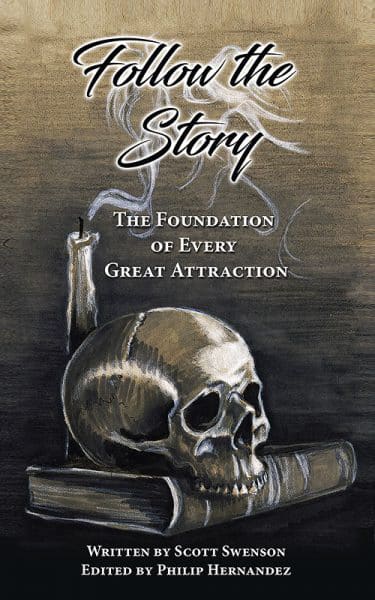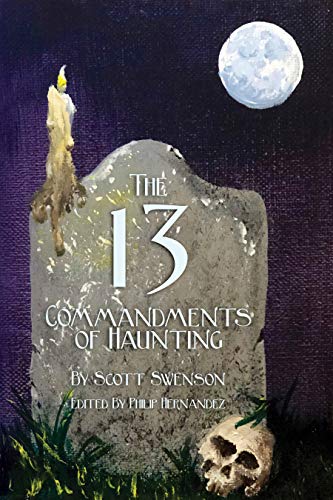Welcome to the Dark, 2021. This first blog of the year is based on my A Scott in the Dark podcast, which is also available on video at YouTube. I did both so you can either watch or listen, depending on your preference. This was my 51st show, and I’m really excited about my next 50. I’ve got a whole bunch of new ideas about topics that I believe you’ll interested in and want to hear more about.
Listen Now
The episode on which this blog is based was all about mash-ups. As you read this, my guess is you’re probably recovering from the holidays, the election, or whatever else might be going on, and you’re probably starting to think, “Well, gosh, what can I do this year that’s new? What new stories can I tell?” How can we make stories new? How do we find ways to incorporate new ideas and make our stories fresh?
We’ve all heard that every story has already been told, and we just have to find a new way to tell it. That’s probably true, but you want to take these stories and find your own twist. What makes you unique is the way you tell the story or the characters you put into it. Of course, this assumes you agree that a story is a valid place to start with any haunted attraction—which, of course, I do. I believe it’s really important to have some sort of story, so you can take guests on a journey and create a piece of immersive theater.
Start with Story
Without reciting my entire Follow the Story book—which, by the way, is available on Amazon—the important thing to remember is that a story basically provides your structure. It gives you a beginning, a middle, and an end. Exposition is about what happened before the story begins, the middle is where all the cool stuff happens, and the end is the big resolution. A story also provides you with structure when making decisions about scenery, lighting, costuming characters, makeup, audio, scent machines, animations, whatever, so your haunt doesn’t look like a trade show floor but all the pieces fit together to serve your story. Gosh, wouldn’t it be fun to go back to a trade show floor again? Well, hopefully soon. You want your haunt to look like a real place that takes people away from reality into your own terrifying narrative.
Develop a Story That’s Unique
So, that’s why it’s important to have a story. Next, you need to figure out the story you want to tell, or how you can tell a story that’s unique and different. First, you need to recognize the difference between story and location. Story is about action. It has a beginning, middle, and end. You must identify the villain. Is it a monster? Is it a human being? Is it a situation like a zombie plague, or, dare I say, pandemic? Your story helps you define what happens in your haunt—where to start, where you’re going, and the resolution. In other words, it answers the question, “Why am I telling this story?”
Does every story have to have a storybook ending or moral? No, absolutely not. But I do think it’s important to at least recognize why you’re taking people on this journey. Let’s say, for the sake of argument, your story involves a hidden coven of vampires that have been sleeping for 100 years, and they come to life to plague contemporary society. I don’t know whether vampires are part of covens or not. Maybe that’s only witches. But anyway, you’ve got a bunch of vampires, and they’ve come to wreak havoc on society. So, that’s your story, which is just a basic storyline. It needs more details.
Identify the Role Your Guests Will Play
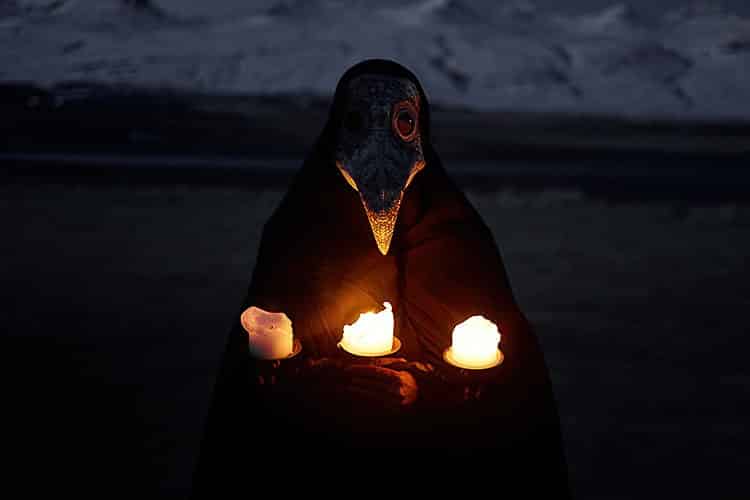
You’ve identified who your villains are, where they’ve come from, and what the story is. Now you need to identify who your guests are. All too often, haunts make the decision to have their guests be passive observers—people who walk through a museum-like experience and look at horrible things going on. I personally don’t care for that kind of haunt, unless it’s something really, really cool. I mean, Universal Studios in Florida, for example, does that kind of haunt very, very well. They do great scenic that’s all tied to a particular intellectual property, and it’s like going through a terrifying museum based on a particular horror film. However, I believe guests need to be part of the story.
One option is to make them the victims. By making your guests the victims of the vampires, they’ll be terrified, and it will be so much easier to startle them. Your actors will have a lot more to do as far as interacting with them instead of just screaming, “Get out!” I absolutely can’t stand that. It’s right up there with actors yelling, “Boo.” If your actors resort to saying, “Get out!” or “Boo,” chances are good they don’t have a whole lot to do. You, as the haunt owner, need to work on your actor training, or you, as haunt actor, need to come up with more things to say.
One idea I think is interesting and that I haven’t seen a lot of haunts do is make their guests allies of the villain(s). In other words, if you’re going to do this vampire scenario we’re talking about, what if the guests are transitioning into vampires? They’re the latest group of recruits, they’re the ones who’ve been bitten most recently, and it’s their blood that’s reinvigorated the vampires to come out of hiding. This doesn’t create a whole lot of conflict between the guests and your actors, but it does create some interesting scenarios in which they might be able to see some things that, if you cast them as victims, they might not get to see. You could have a lounge area where all the vampires are just kicking back and drinking blood and smoking hookahs—or whatever vampires smoke. This scenario might give you the opportunity to open up your thinking and create some unique scenes you may not have done before.
Another idea is to make guests the familiars of the vampires. They’re the humans that take care of the vampires during the day. Whatever, you need to decide who your guests are as part of that story, because this will help you better define it. It will also give your actors more to play with and help you choose the next cool piece of scenic or animation or prop or whatever that you want to use, because you’ve got an interesting story worth telling.
Decide on Location

So, we’ve identified what story is all about. Now, let’s talk about location. For example, when you think of vampires, the first location many haunters immediately think of is a big castle. Well, first off, that’s been done before. However, if you own a big castle, by all means use that castle. However, most haunters would have to recreate a castle in a storefront or a warehouse, which is, first off, not cost-effective, and, secondly, won’t be as well executed as it is in your mind. You’ll have these great ideas, but you won’t be able to translate those into something real.
From a film standpoint, when the series Underworld created those beautiful castle scenes, they juxtaposed them with modern day or placed them in history, which was interesting and neat. They told the Lycan story, but they were able to put their own twist on it. This did this not just by playing with location but by playing with time placement in some of the films, which made them fresh and new.
Tell Your Story in a New Location
You need to recognize you can tell your story in almost any location. Those of you who listen to my podcasts or read my blogs on a regular basis know I’ve always wanted to do a haunt that takes place completely in a laundromat. I think that could be a really cool location. You’ve also probably heard me say, “A haunt is simply some place or something that’s gone horribly, horribly wrong,” which means you can pretty much make any location work for you.
Continuing with our vampire theme, when I was still working at Busch Gardens and doing Howl-O-Scream, I wanted to do a vampire house. Originally, I had a space and a budget where I could do a tall, ceilinged something, but I couldn’t really afford to do a castle in the way I wanted to. My original plan was to have a group of vampires that had been sleeping for the last 100 years but with two or three had been awake all that time. I mean, they’re immortal, so they can do that. These vampires had been collecting items and were now the curators of this incredible museum they used as a front for their vampire activity. Having worked in a couple museums, I can tell you that walking through a museum after dark is creepy as all get out. So, I thought that would have been a really cool idea.
We lost the original space where we were going to put this attraction and had to move it into the bumper cars area, which had a very low ceiling and didn’t look anything like a museum. We kept the story, but we changed the location and made it a subway. These vampires had been living underground—which made sense, since vampires like darkness—and the subway cut into their underground domain, so the vampires were intermingling with people. The haunt became vampires in the subway.
Again, is this the first thing you think of when you think of vampires, or are vampires the first thing you think of when you think of a subway gone horribly, horribly wrong? No, but by taking these two seemingly unrelated elements and mashing them up, we created something I’d never seen before, and I thought it was kind of cool. It made the vampire story unique and fresh.
One of the things this story exemplifies is that you can take whatever location you have or whatever location you can build and tell whatever story you want to. If you want to tell a story about the end of the world, you could have an apocalyptic tale where everyone is trapped in a cookie factory. The world is ending, and people are reduced to fighting over cookies for food. Just adapt the story to the location, and try to use the assets you have—including your location. Transform them to create an environment where you can tell the story. Don’t get locked into, “If we’re telling this story, it has to take place here.” Create those new stories and experiences by mashing up a story in perhaps a very non-conventional location.
A Fun Brainstorming Game to Discover Creative Mash-ups

If you’re having trouble wrapping your head around this mash-up idea, get your team together and do a little brainstorming game. Have everybody on the team write down 10 different kinds of stories. The initial storyline doesn’t have to be complex: Zombies taking over the world, vampires emerging after being dormant for 100 years, a new strain of werewolf, a serial killer. Write the stories on individual pieces of paper, put them in a box, and then have everybody write down a bunch of different, weird locations and put them in another box. One by one, have each person pull a piece of paper from each box and come up with a story that brings the two together. Since we’re still early in the year, you have the opportunity to take time to develop something unique and new using this game. The other advantage to using this approach is it uses concepts that people understand to create something entirely new.
Reuse Your Assets to Create a New Story
You can also use this concept if you want to reuse some of your assets and want to create a new story. Make a list of all the cool things you want to keep and put those in one box, and put locations in the other. Say you’ve got five kickers in body bags that you want to keep. Can you turn those body bags into laundry bags, bloody them up, and have the location be a laundromat? Or maybe you want your haunt to be in a library, and the building you’re renting has gorgeous hardwood floors. You can put in bookcases and, behind the bookcases, you put in those laundry bags with kickers inside. The bookcase opens, and there are all these body bags filled with semi-dead people. Instead of setting the story in a morgue, you set it in a library. Sometimes the juxtaposition of, “I never expected to find that here,” really startles people. It throws them for a loop. So, use this exercise when you’re trying to reuse your assets.
Another example of how this exercise can be done is to divide your team into four groups, give each group three different props, and have each group come up with a story that incorporates all three of those props. Let your people know the props can be re-dressed and changed. If you’ve got a jumping zombie, and you decide you you’re going to have a Christmas-themed haunt—the North Pole gone horribly, horribly wrong—put an elf hat on the zombie and make it an elf that’s gone horribly evil and wicked. Keep in mind that you can add bits and pieces to existing props to tie them into your new story or your new location to create something new and fresh.
You might discover that you can keep your story but change your location. This is another way to reutilize assets you already have. For example, the vampires who started underground in the subway have upgraded and moved into a house. So, this year, you’re going to take the same vampires and move into the next part of your story. Horror movies have taken advantage of serialization for years—the original horror movie, and then the horror movie part two and part three. Then they usually do a prequel. You can do that, too, especially if you’ve had a successful year and want to build on your success.
Some people may feel these kinds of exercises are a complete waste of time, but I feel they’re essential to developing something new if you want to continue to grow or find new ideas, which will, in turn, continue to expand your demographic and put more money in your pocket.
Keep Your Location and Change the Story
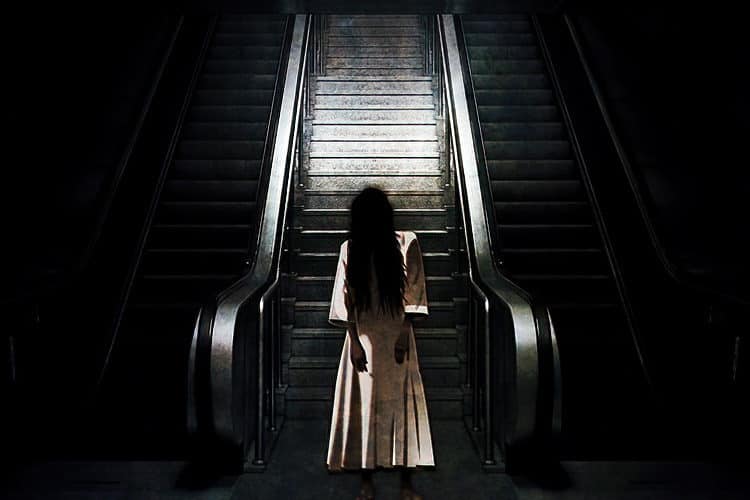
Another option might be to keep your location and change the story. In this scenario, the vampires in the subway have moved on or were chased out by werewolves who were looking for a place to hide and took over the underground caves. You can keep all of your same props but change your costumes and your cast, and you’ve got a whole new haunt because you’ve changed the story.
There are huge advantages in separating your story, your characters, and your concept from your location. You can always go back and remix and rematch. I find it fascinating to think about what my house would look like if, all of a sudden, I was Lucy the Demon Dog or I was transformed into a zombie. I wouldn’t have to rebuild the house, but I could scenically treat it. You can do the same thing. You can change your story and keep your location. I think that gives you a different way of thinking about how to scare people. You don’t even have to change your footprint.
Reverse Your Haunt Walk-through for a Whole New Experience
Of course, regular listeners and readers have heard me say that the easiest way to change your experience is to reverse it—make the entrance the exit and the exit the entrance. Before you say you could never do that, walk your haunt. I used to say the same thing, and I’ve discovered that you absolutely can reverse it and make it something that’s totally cool. You have to be able to let go of the old in order to embrace the new, but you can do that. If you’re able to recognize that your story and your location aren’t set in stone or tied together, you’ll be able to change things more quickly and create truly unique haunt experiences.
Hopefully, this little discussion gets you thinking about what your story is going to be for this year’s haunt, what your location is going to be, what props you need to keep and, more importantly, what props you need to buy as we move forward. The reason that’s important now is because there are trade shows coming up, both virtual and those that are currently scheduled to be in person—depending on how things go with the health situation this country is in. Hopefully, we’ll be able to see each other in person at different trade shows.
Know Your Story and Location Before Attending Trade Shows
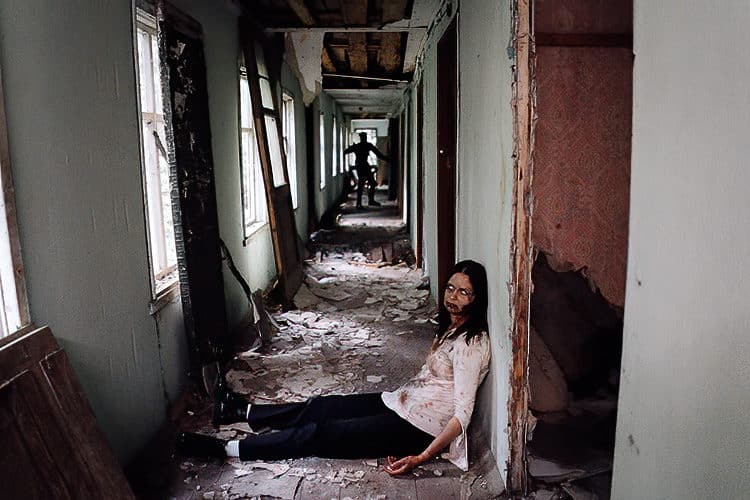
Because you’ve done this exercise of identifying your story and your location early, you’ll be able to go to these trade shows and know what you need. This will make your shopping significantly easier. It will be better for the vendors as well, because they’ll be able to tell you if they have what you’re looking for. This is especially going to be true with virtual trade shows. For example, HAuNTcon went virtual this year, and, as a result, it was free to attend. You can check it out online. I hosted an educational panel for HAuNTcon this year called, “I Didn’t Think That Would Work, But It Did: Lessons Learned from the 2020 Haunt Season.” This took place on January 19th at 1:00 pm. There was a panel of diverse folks in the industry including Justin Fix from Just Fix It Productions that talked about the positive side of what came out of 2020. There actually were a few things.
Looking Forward to an In-person Transworld in May of This Year
I’m currently scheduled to do a seminar at Transworld—which is, fingers crossed, scheduled to be a live, in-person show in St. Louis at the America’s Center. The seminar I’m doing there has nothing to do with Halloween. It’s called, “Capturing the Christmas Spirit.” Not only do I do Halloween events, I also do Christmas events. It will be on Friday, May 7th, from 11:30 am to 12:30 pm. So, if you’re planning to go to Transworld, please stop in and say hello. I’d love to see you. Even if you’re not planning to do a Christmas event and don’t attend my seminar, I’ll hopefully see you on the trade show floor. However, you should attend my seminar, because it’s going to be cool. Just sayin’.
A New Book!
Since I’ve kind of entered into the promo section of this blog, I’d be remiss if I didn’t point out that I have a brand-new book called The 13 Commandments of Haunting. Philip Hernandez did the editing, and it’s based on this A Scott in the Dark podcast series. It’s available on Amazon as are my other books, Follow the Story, and my volume of dark poetry and prose, Awake in the Dark. To find out more, go to ScottSwenson.com/books, and you’ll be able to find links to everything I’ve ever written.
The Green Tagged Podcast
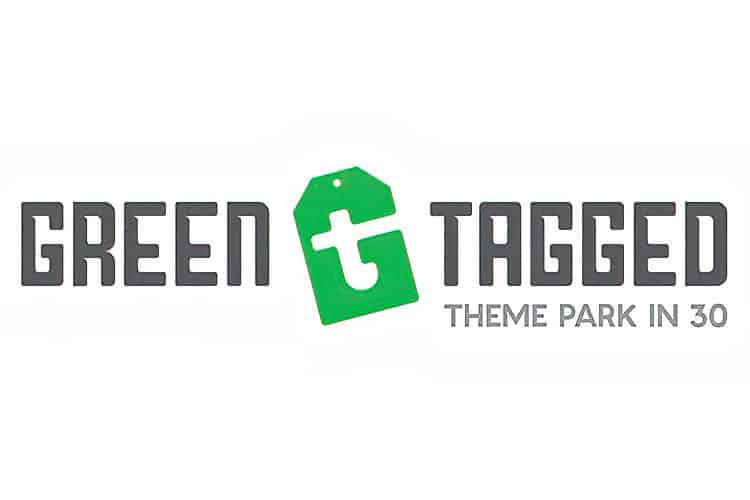
Also, speaking of Philip, I’m the cohost of what I’ll call a related podcast, Green Tagged: Theme Park News in 30. It’s a 30-minute show where we give you the business side and trends that are happening in theme parks, attractions, and seasonal entertainment. It’s a weekly podcast that drops every Sunday. We also do some special podcasts on specific topics. Green Tagged: Theme Park News in 30 is available on all the podcast carriers. You can also go to GreenTaggedShow.com and find all the information there. The cool thing about this show is Phillip puts a lot of effort into the show notes, so you can not only listen to us talk about the news but also read the articles we’re referencing as well as whatever other information is there. That show is videotaped, so you can either watch it or listen to it.
Finally, I’d like to ask each and every one of you to please become a subscriber to my newsletter, which is like a one-stop shop where I can talk about everything I’m doing—not just the things I promote at the end of my show but also the projects I’m working on. Sometimes, I need help, so I’ll reach out to my newsletter folks first. This is a monthly newsletter that comes out on the 13th of the month—of course—and in each newsletter is some kind of giveaway or newsletter-subscriber-only content. Sometimes it’s a video of behind the scenes at one of the projects I’m working on. In the past, there was a print-at-home mask that fit over a fabric mask that magically turned you into a clown. There have been downloadable audio clips that talked about COVID safety precautions in your haunted attraction. One that I thoroughly loved was a members-only, video Q&A with me. That was a great experience. We’re going to do another one of those sometime in 2021. Then, of course, since I have new books out there, it’s a possibility that sometime in the near future we might be doing raffles to give away signed copies of those books.
The easiest was to subscribe is to go to ScottSwenson.com and, on the landing page, you’ll see a big banner that says, “Join Scott’s newsletter,” which is called “A Shout in the Dark.” Click on that to get access to the newsletter. We don’t sell your information. You won’t get one single, solitary piece of spam. We won’t use your information for anything other than to send you cool stuff.
I hope everyone in your family, both your real family and your after-dark family, are staying safe. Until next time, this is Scott Swenson saying, “Rest in peace.”
